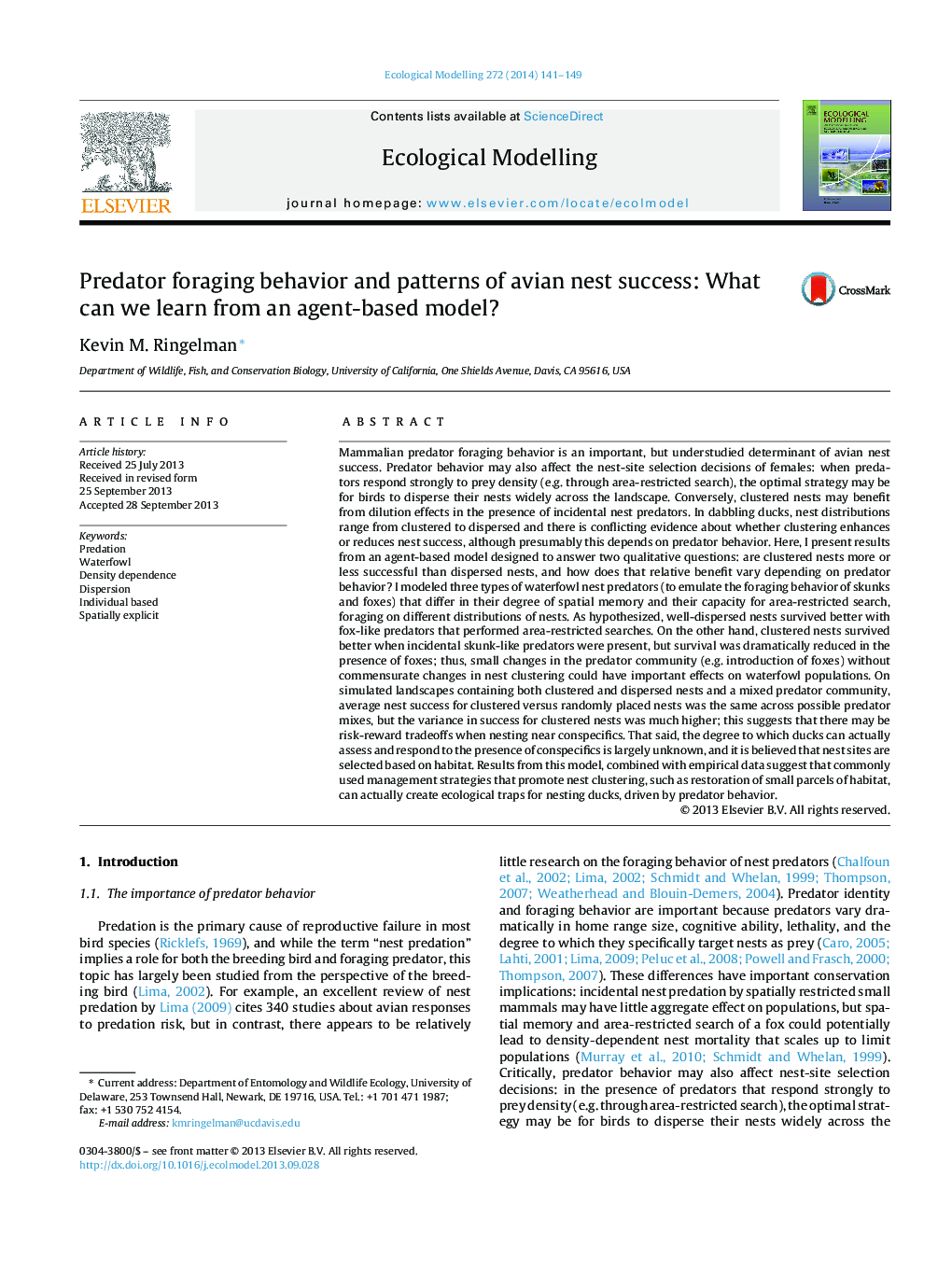| Article ID | Journal | Published Year | Pages | File Type |
|---|---|---|---|---|
| 6296991 | Ecological Modelling | 2014 | 9 Pages |
Abstract
Mammalian predator foraging behavior is an important, but understudied determinant of avian nest success. Predator behavior may also affect the nest-site selection decisions of females: when predators respond strongly to prey density (e.g. through area-restricted search), the optimal strategy may be for birds to disperse their nests widely across the landscape. Conversely, clustered nests may benefit from dilution effects in the presence of incidental nest predators. In dabbling ducks, nest distributions range from clustered to dispersed and there is conflicting evidence about whether clustering enhances or reduces nest success, although presumably this depends on predator behavior. Here, I present results from an agent-based model designed to answer two qualitative questions: are clustered nests more or less successful than dispersed nests, and how does that relative benefit vary depending on predator behavior? I modeled three types of waterfowl nest predators (to emulate the foraging behavior of skunks and foxes) that differ in their degree of spatial memory and their capacity for area-restricted search, foraging on different distributions of nests. As hypothesized, well-dispersed nests survived better with fox-like predators that performed area-restricted searches. On the other hand, clustered nests survived better when incidental skunk-like predators were present, but survival was dramatically reduced in the presence of foxes; thus, small changes in the predator community (e.g. introduction of foxes) without commensurate changes in nest clustering could have important effects on waterfowl populations. On simulated landscapes containing both clustered and dispersed nests and a mixed predator community, average nest success for clustered versus randomly placed nests was the same across possible predator mixes, but the variance in success for clustered nests was much higher; this suggests that there may be risk-reward tradeoffs when nesting near conspecifics. That said, the degree to which ducks can actually assess and respond to the presence of conspecifics is largely unknown, and it is believed that nest sites are selected based on habitat. Results from this model, combined with empirical data suggest that commonly used management strategies that promote nest clustering, such as restoration of small parcels of habitat, can actually create ecological traps for nesting ducks, driven by predator behavior.
Related Topics
Life Sciences
Agricultural and Biological Sciences
Ecology, Evolution, Behavior and Systematics
Authors
Kevin M. Ringelman,
